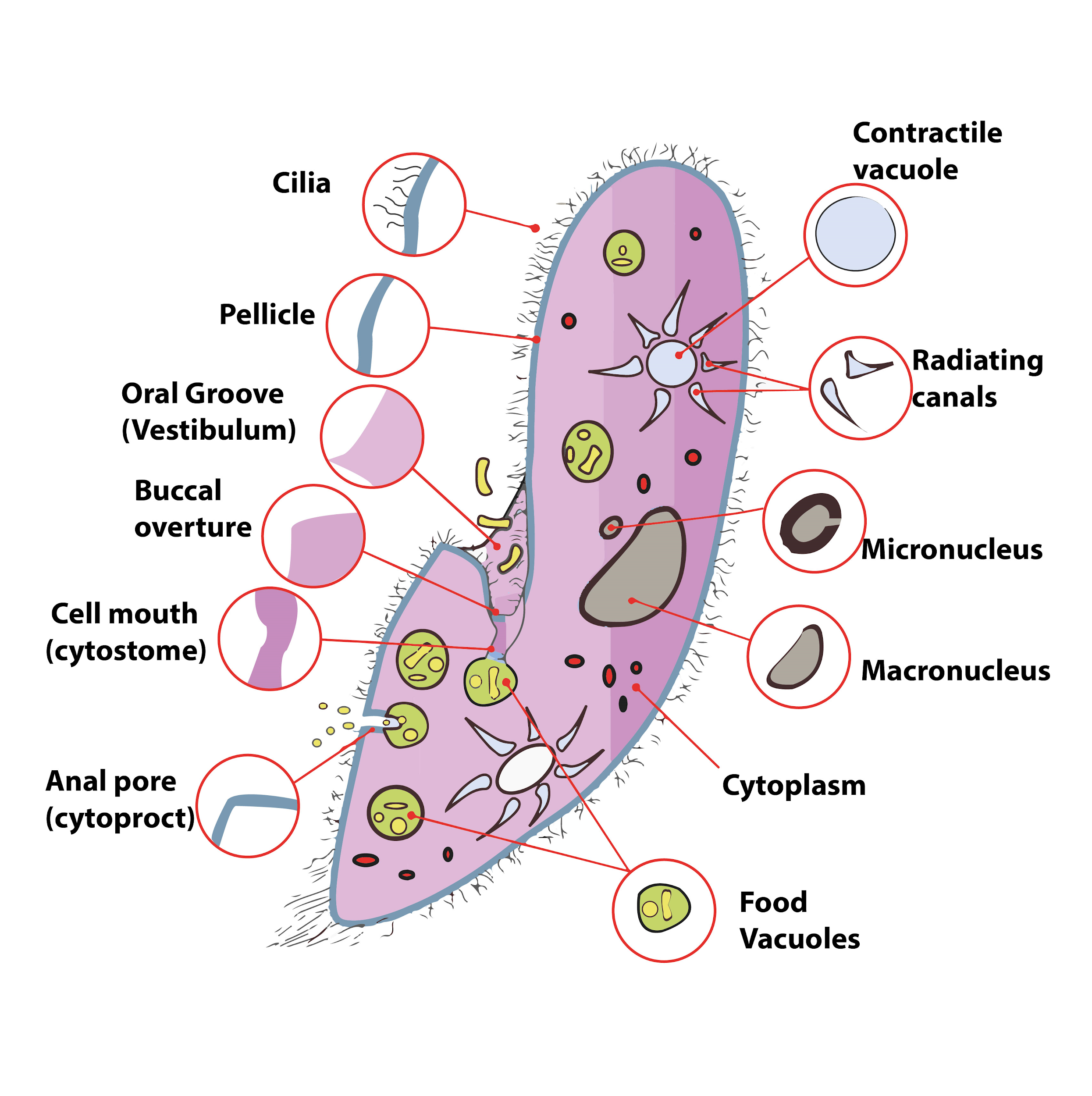
This diagram belongs to a protozoan. This organism belongs to a class

(a)Sporozoa
(b)Sarcodina
(c)Flagellata
(d)Ciliata

Answer
587.7k+ views
Hint: This unicellular organism lives in mainly freshwater. The whole body is covered with a short hairy structure called cilia. They are single-celled, free-living organisms.
Complete step-by-step answer:
Paramecium is a protozoan that belongs to class ciliata. It exhibits a high-level cellular differentiation with several complex organelles that perform a specific function to make its survival possible. It is made up of two membranes, the outer membrane is a layer of flattened membrane-bound sacs and the inner membrane is epiplasm. The body of the cell is surrounded by a rigid but elastic structure called the pellicle. It has an anal pore located on the ventral surface.
General characters of paramecium:
-It is generally found in freshwater bodies like pools, ditches, streams, rivers, lakes, etc. but it is abundantly found in stagnant water, where decaying organic matter is in plenty.
-It feeds on microorganisms like bacteria, algae, and yeasts and shows holozoic nutrition.
-The locomotion occurs with the help of cilia, which also helps in food capture.
-Digestion is intracellular because food gathered into vacuoles.
-Respiration occurs by the body surface through the diffusion process.
-Excretion takes place by contractile vacuole and cytoproct.
-It reproduces asexually by transverse binary fission and sexually by conjugation.
So, the correct answer is ‘ciliata’.
Note: -Cytostome is a fine aperture in the cell membrane of Paramecium by which food particles enter into the cell.
-Cytoproct is an anal opening in the unicellular organisms that involves food vacuole egestion (excretion).
Complete step-by-step answer:
Paramecium is a protozoan that belongs to class ciliata. It exhibits a high-level cellular differentiation with several complex organelles that perform a specific function to make its survival possible. It is made up of two membranes, the outer membrane is a layer of flattened membrane-bound sacs and the inner membrane is epiplasm. The body of the cell is surrounded by a rigid but elastic structure called the pellicle. It has an anal pore located on the ventral surface.
General characters of paramecium:
-It is generally found in freshwater bodies like pools, ditches, streams, rivers, lakes, etc. but it is abundantly found in stagnant water, where decaying organic matter is in plenty.
-It feeds on microorganisms like bacteria, algae, and yeasts and shows holozoic nutrition.
-The locomotion occurs with the help of cilia, which also helps in food capture.
-Digestion is intracellular because food gathered into vacuoles.
-Respiration occurs by the body surface through the diffusion process.
-Excretion takes place by contractile vacuole and cytoproct.
-It reproduces asexually by transverse binary fission and sexually by conjugation.
So, the correct answer is ‘ciliata’.
Note: -Cytostome is a fine aperture in the cell membrane of Paramecium by which food particles enter into the cell.
-Cytoproct is an anal opening in the unicellular organisms that involves food vacuole egestion (excretion).
Recently Updated Pages
The number of solutions in x in 02pi for which sqrt class 12 maths CBSE

Write any two methods of preparation of phenol Give class 12 chemistry CBSE

Differentiate between action potential and resting class 12 biology CBSE

Two plane mirrors arranged at right angles to each class 12 physics CBSE

Which of the following molecules is are chiral A I class 12 chemistry CBSE

Name different types of neurons and give one function class 12 biology CBSE

Trending doubts
One Metric ton is equal to kg A 10000 B 1000 C 100 class 11 physics CBSE

Explain zero factorial class 11 maths CBSE

What is 1s 2s 2p 3s 3p class 11 chemistry CBSE

Discuss the various forms of bacteria class 11 biology CBSE

State the laws of reflection of light

Difference Between Prokaryotic Cells and Eukaryotic Cells




